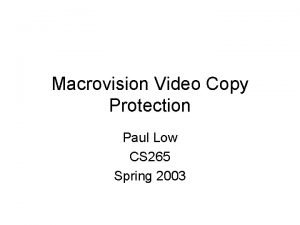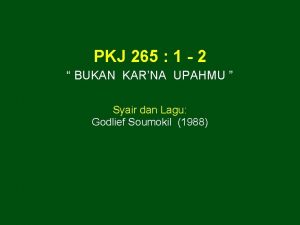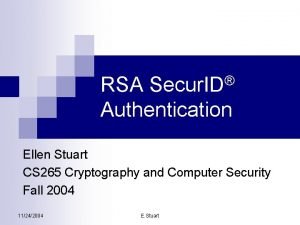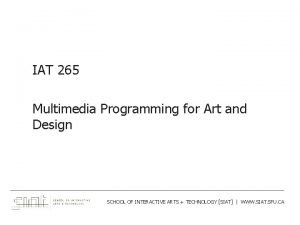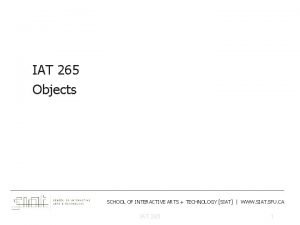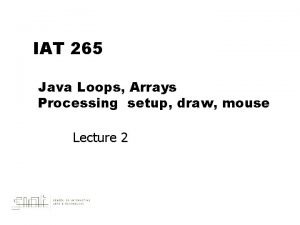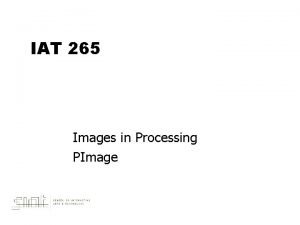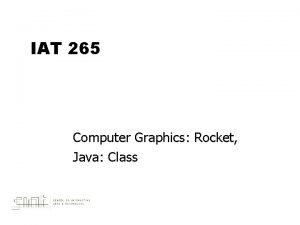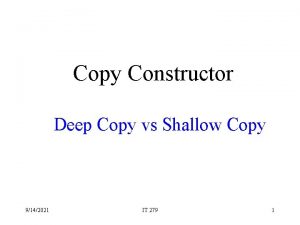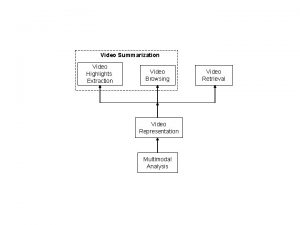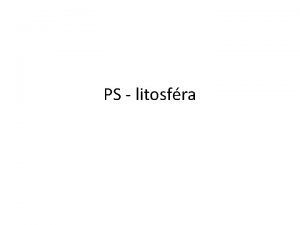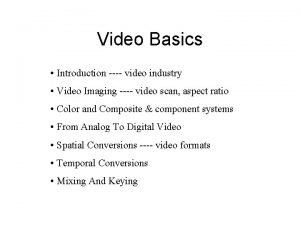Macrovision Video Copy Protection Paul Low CS 265










- Slides: 10

Macrovision Video Copy Protection Paul Low CS 265 Spring 2003

INTRODUCTION Everyone is probably familiar with the warning that appears at the beginning of most video tapes informing people that making copies of the video tape is illegal. If everyone made copies there would be no money to pay the artists, and no movies would get made. Unfortunately, the warning is not enough, so most video tapes come with a copy protection signal embedded on the tape. Macrovision is one of the most popular of such products. According to Macrovision, – The technology is applied to over 550 million videocassettes annually – It is used by every MPAA movie studio on some or all of their videocassette releases – A study found that over 30% of VCR households admit to having unauthorized copies – The total annual revenue loss due to copying is estimated at $370 million annually

MACROVISION Macrovision's copy protection technologies are designed to allow content owners to protect their videocassettes, digital Pay-Per-View (PPV) programs, and Digital Video Disks (DVD) from unauthorized recording on VCRs U. S. patent document filed April 17, 1985 by John O. Ryan (Patent number 4631603) “The object of this invention is to provide a method and apparatus for modifying a video signal so that a conventional television receiver produces a normal picture from the modified signal, whereas a videotape recording made from the modified signal is rendered unacceptable. ”

Video Tape TV Regular picture Recording VCR Picture + Noise DVD PPV Program Uplink Center Set-top Decoders Unprotected signal Copy protection signal

The recording VCR does not know whether the picture it’s trying to capture is obtained legally from a regular TV program or illegally from another video tape, DVD, or PPV program. The signal coming from the original video tape, DVD, or PPV program contains the copy protection signal that does not affect the picture produced by the TV, but the noise is picked up by the recording VCR.

DETAILS • VCR Macrovision exploits the automatic gain control (AGC) circuit in the recording VCR The automatic gain control is a component in the VCR. The purpose of the AGC is to adjust the level of the video signal in such a way that the recording capabilities of the tape are fully used. This means that weak signals are amplified and strong ones are made weaker. The confused AGC in the VCR therefore records the signal incorrectly.

• TV Video signal for a TV: - luminance information (how bright a pixel should appear on the screen) - color information (the color of each pixel) - synchronization information (gives instructions to the electron gun that paints the image on the television screen) On each scan line, the electron gun starts painting on the left side of the screen and horizontal synchronization pulses tell the gun when turn off and reset back to the left. Similarly for each frame, vertical synchronization pulses control the electron gun that start from the top of the screen and paints downward. When the gun turns off and resets back to the top, this period is known as the vertical blanking interval.

• Copy Protection Signal Extra sync pulses and fake video data inserted in the vertical blanking interval Since the TV is not displaying anything during the blanking interval, nothing shows up on the screen. That’s why it looks fine on the TV screen. A VCR, on the other hand, is trying to make a faithful recording of the entire signal it sees. It therefore tries to record the signal containing the extra sync pulses. The AGC sees the extra sync pulses and the fake video data and sets its level incorrectly while recording. The real movie information gets recorded at a much lower level than it normally would, so the screen turns black instead of showing the movie. The sound is still present because a completely separate circuit records the audio.

• DVD - Region encoding - Content scrambling system (CSS) - Current development focuses on information hiding and copyright-marking schemes

• Digital Pay-Per-View The direct broadcast satellite operator or cable system operator transmits a software command from the uplink center to the set-top decoders An integrated circuit inside the decoder receives the command adds the copy protection waveform to the analog video destined for the TV
